Background
Luxury effect refers to the positive correlation between urban canopy cover and wealth of the neighbourhood [1] [2]. In some context, the concept is also applied to plant diversity [3] or even animal diversity (e.g. birds [4] and lizards [5]).
It got me curious about whether or not there is a similar pattern in Singapore. Without looking at the data, there can be very different predictions:
- No, there isn’t, because plants in Singapore are managed by the governments rather than the residents.
- Yes, there is, because wealthier people likes to live near vegetated areas. (e.g. Condominiums are mostly near natural reserves.)
Therefore, I explored the possible luxury effect in Singapore by comparing vegetation cover and monthly income of 35 planning area. I used ArcGIS, Excel and R as my analysis tools. Now I will show you the detailed methods that I used.
Methods and Results
Step 1: Mapping income data
The source of income data is Census of Population 2010. Population from each monthly income level was reported for 35 planning areas. The other 20 areas were not reported possibly because of small population.
I then calculated the mode, median, and average income for each planning area and typed the information into a map consisting of all planning areas. The map for planning area boundary was retrieved from https://data.gov.sg/dataset/master-plan-2014-planning-area-boundary. The following map presents median of income in each area. I changed the symbology so that the darker the red color is, the wealthier the area is. Areas without data has no color.
Step 2: Land cover type classification
I used a satellite image exported from www.cartodb.com. The good thing about cartodb is that I can export map with a pretty high resolution (2400 *2400 in this case).
I clipped out Singapore using the boundary of planning areas.
Using the Image Classification tool, I was able to perform interactive supervised classification on the satellite image. In other words, I picked some typical samples of vegetation, waterbody and non-vegetated area to train ArcGIS, and then ArcGIS identified the class for the rest of the map.
Here are the training samples I chose. I feel that the training samples can be improved, because I doubt it can classify southern Singapore very accurately. Please give me some suggestions if you know how to improve it!
Here is the result of classification. Green represents vegetation, blue represents waterbody, and beige represents non-vegetated areas.
I converted this raster layer into a vector layer for further analysis.
Step 3: Visual comparison
Let’s overlay the Income Layer and Land Cover Type layer from Step 1 and 2.
With the Effects toolbar in ArcGIS you can swipe the top layer to compare. You may observe that some of the wealthiest areas, such as Tanglin, Bukit Timah, and Mandai have pretty high proportion of vegetation. However, visual comparison is not enough.
Step 4: Intersection
I did an intersection of Income and Land Cover Type layers, in other words, identifying all patches of vegetation, waterbody, and non-vegetated area in all planning areas.
I used the Summary Statistics tool to sum up the total area of the three land cover types in all planning areas. I obtained the following output table.
I exported this table to Excel and processed the data further there.
Step 5: Linear regression
I plotted the percentage of vegetated in total area (waterbodies subtracted) against mode, median, and average monthly income. The subtraction of waterbodies actually didn’t make a great difference to the results, but I did it so that the data makes more sense.
As you can see, there are very slight positive correlations between vegetation and income in all three cases, but unfortunately, all correlations are non-significant (p>0.05).
Discussion
Does this mean that the luxury effect does not hold in Singapore? Not necessarily, I would say. There are still some more factors to consider.
1 Boundary and scale
I looked at the top five areas with highest percentage of vegetation:
- Mandai
- BukitPanjang
- BukitBatok
- Tanglin
- Yishun
Bukit Panjang and Yishun had high vegetation cover but low income. However, residents most likely do not live in the large patches of vegetation. We need to take note that:
When it comes to ecology, political boundaries are often not meaningful.
The inclusion of large patches of vegetation in these planning areas might mask the real pattern. Instead of planning areas, neighbourhoods together with buffer zones around them may be better units of analysis, so that we can exclude the non-habitable areas.
However, income data for neighbourhoods is not available, so I decided to take another approach: looking at the locations of private landed properties, as private landed properties are usually associated with high income. We can potentially use condominiums and HDBs, as condominiums are generally more expensive than HDB, but there is not a good map for condominiums.
I retrived a map for private landed properties from URA website: https://www.ura.gov.sg/maps/index.html?service=lha.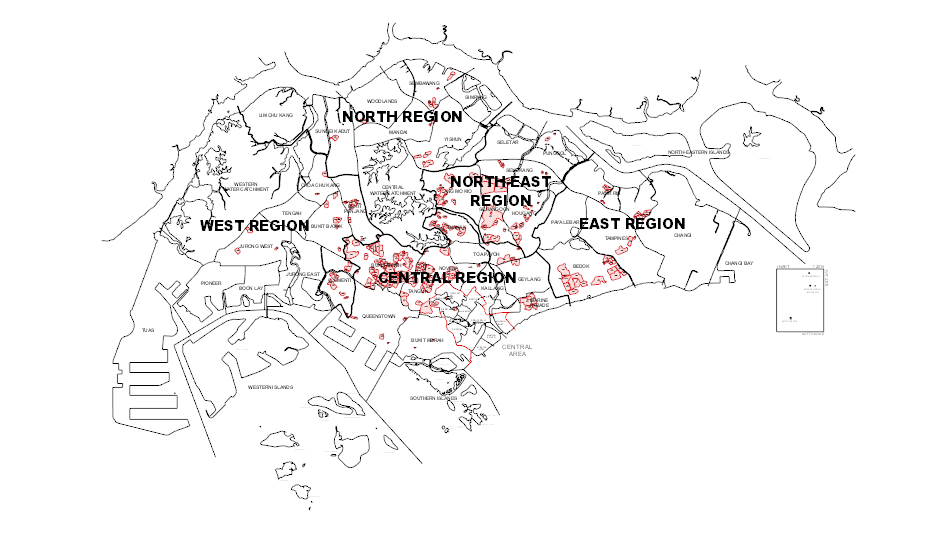
I overlaid it on Land Cover Type layer.
I noticed that for Bukit Panjang and Yishun, rich people still live near natural reserve. This map also showed us:
Scale is important in spatial ecology.
We can get more useful information by zooming into neighbourhoods.
2 Preference for housing location
I also looked at the top five areas with lowest percentage of vegetation:
- Singapore River
- Geylang
- Rochor
- River Valley
- Downtown Core
I noticed that apart from Geylang, all the other areas are near Singapore River, or Singapore’s CDB. This is contradictory to the prediction from luxury effect, but again, more study needs to be done on the scale of neighborhoods.
Unlike North American cities where better residences are at the outer zone of the city, wealthy residents’ preference for housing location in Singapore shows two extremes: near natural reserves (high percentage of vegetation), or near Singapore River (low percentage of vegetation). This difference, together with the fact that most plants are not managed by residents, might explain why luxury effect does not hold true in Singapore.
3 Limitation
A limitation of this study is that income data was given in categories, so that I had to designate a value to each income level, which may reduce the accuracy. In addition, most of the areas have a median income between 2500-3999 SGD, represented by only two income levels. Having more income levels will give us more information.
Canopy cover could potentially be measured on a finer scale, with a satellite image of higher resolution. The type of vegetation and diversity of plants could be studied with field work.
Conclusion
The luxury effect is not observed in Singapore on the scale of planning areas. However, study on neighbourhood scale is needed to confirm.
###########Update#################
Although income data is not available on neighbourhood scale, I think we can use housing type as a proxy. That would require us to produce a map with all resident areas and corresponding housing type in Singapore. That is a lot of work. SLA actually has a map for this: http://www.sla.gov.sg/Services/StreetMap/LicensingofDigitisedLandInformation.aspx. They sell it for 100 SGD. I and my friends have asked SLA and they responded that NUS has paid for it, but I have not been able to obtain it yet.
References
[1] Zhu, P., & Zhang, Y. (2008). Demand for urban forests in United States cities. Landscape and urban planning, 84(3), 293-300.
[2] Schwarz, K., Fragkias, M., Boone, C. G., Zhou, W., McHale, M., Grove, J. M., O’Neil-Dunne, J., McFadden, J. P., Buckley, G. L., Childers, D., & Ogden, L. (2015). Trees grow on money: urban tree canopy cover and environmental justice. PloS one, 10(4), e0122051.
[3] Hope, Diane, Corinna Gries, Weixing Zhu, William F. Fagan, Charles L. Redman, Nancy B. Grimm, Amy L. Nelson, Chris Martin, and Ann Kinzig. “Socioeconomics drive urban plant diversity.” Proceedings of the national academy of sciences 100, no. 15 (2003): 8788-8792.
[4] Lerman, S. B., & Warren, P. S. (2011). The conservation value of residential yards: linking birds and people. Ecological Applications, 21(4), 1327-1339.
[5] Ackley, J. W., Wu, J., Angilletta, M. J., Myint, S. W., & Sullivan, B. (2015). Rich lizards: How affluence and land cover influence the diversity and abundance of desert reptiles persisting in an urban landscape. Biological Conservation, 182, 87-92.
Further links and useful readings
Lizards in Phoenix:
Urbanization and plant diversity:
Walker, J. S., Grimm, N. B., Briggs, J. M., Gries, C., & Dugan, L. (2009). Effects of urbanization on plant species diversity in central Arizona.Frontiers in Ecology and the Environment, 7(9), 465-470.
Map of HDBs:
http://services2.hdb.gov.sg/web/fi10/emap.html
Map of condominiums:
https://keylocation.sg/condo-map
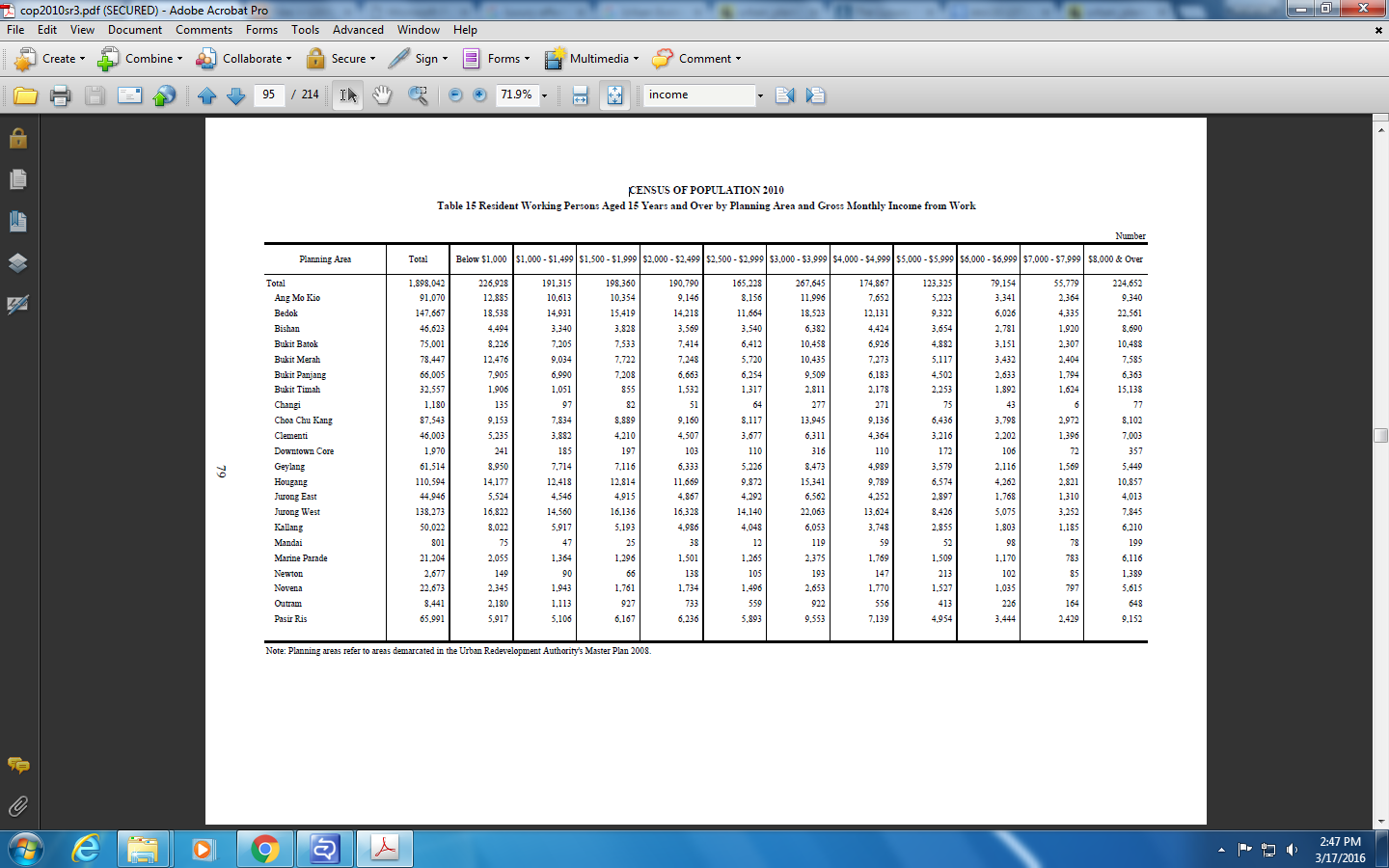
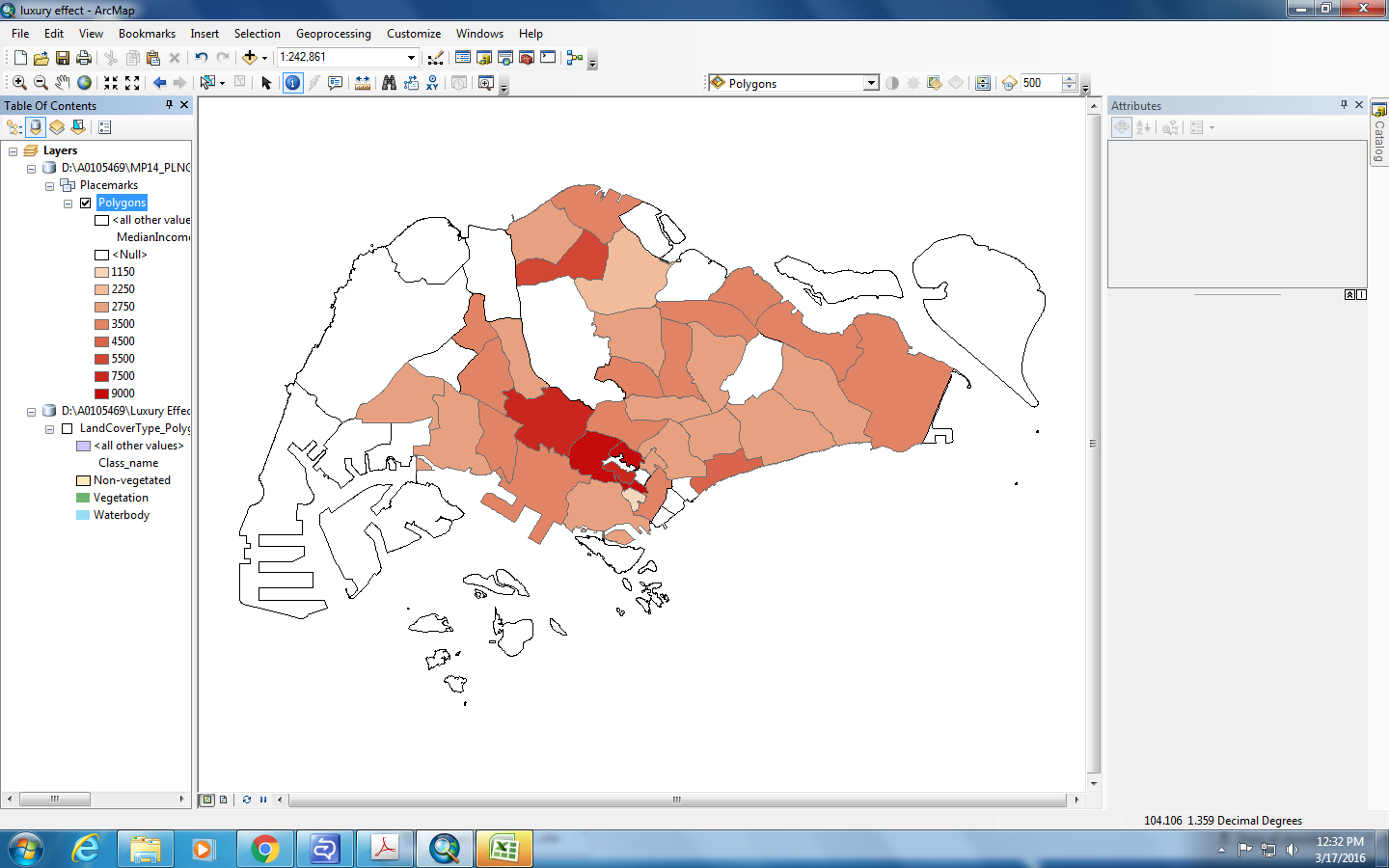
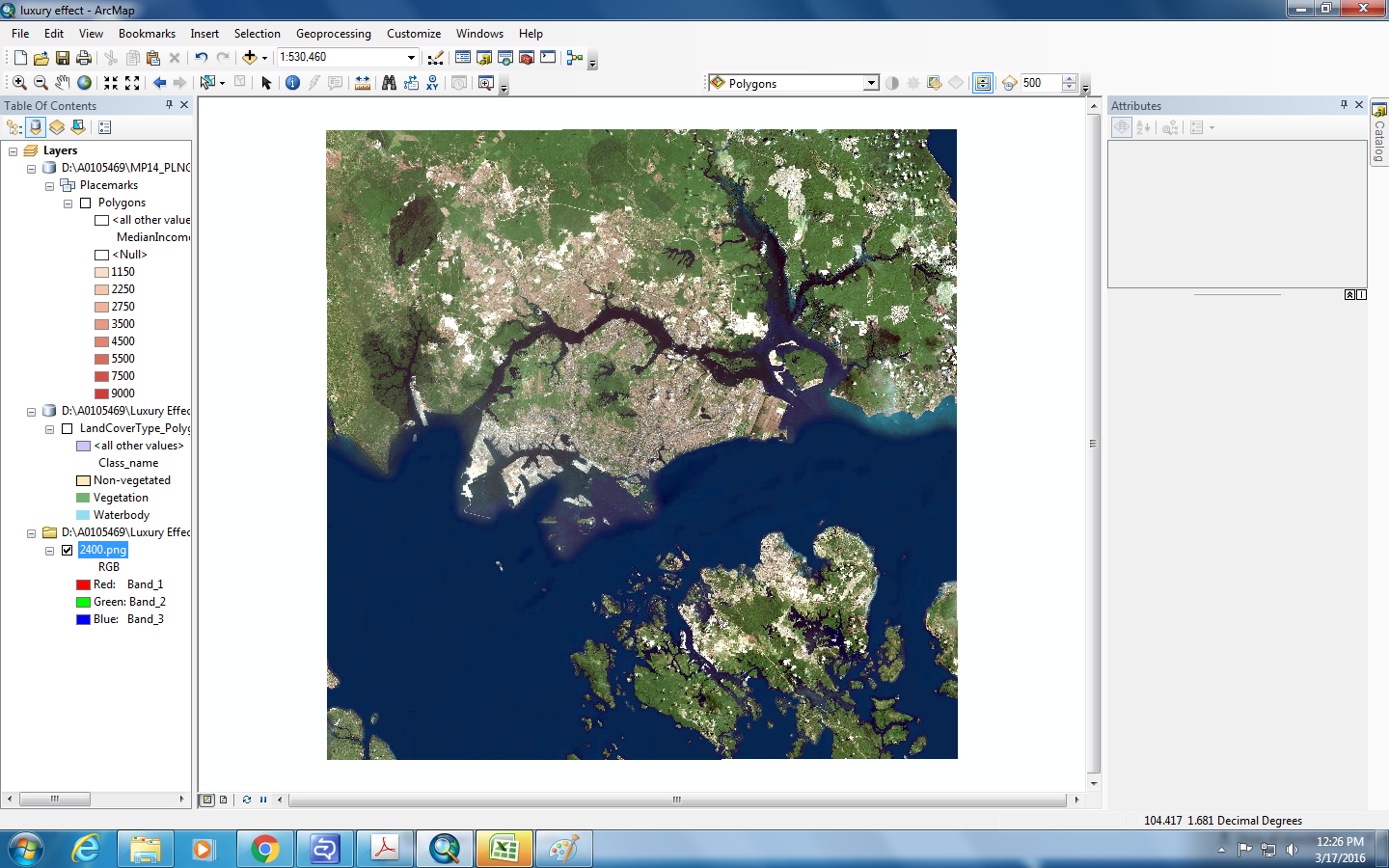

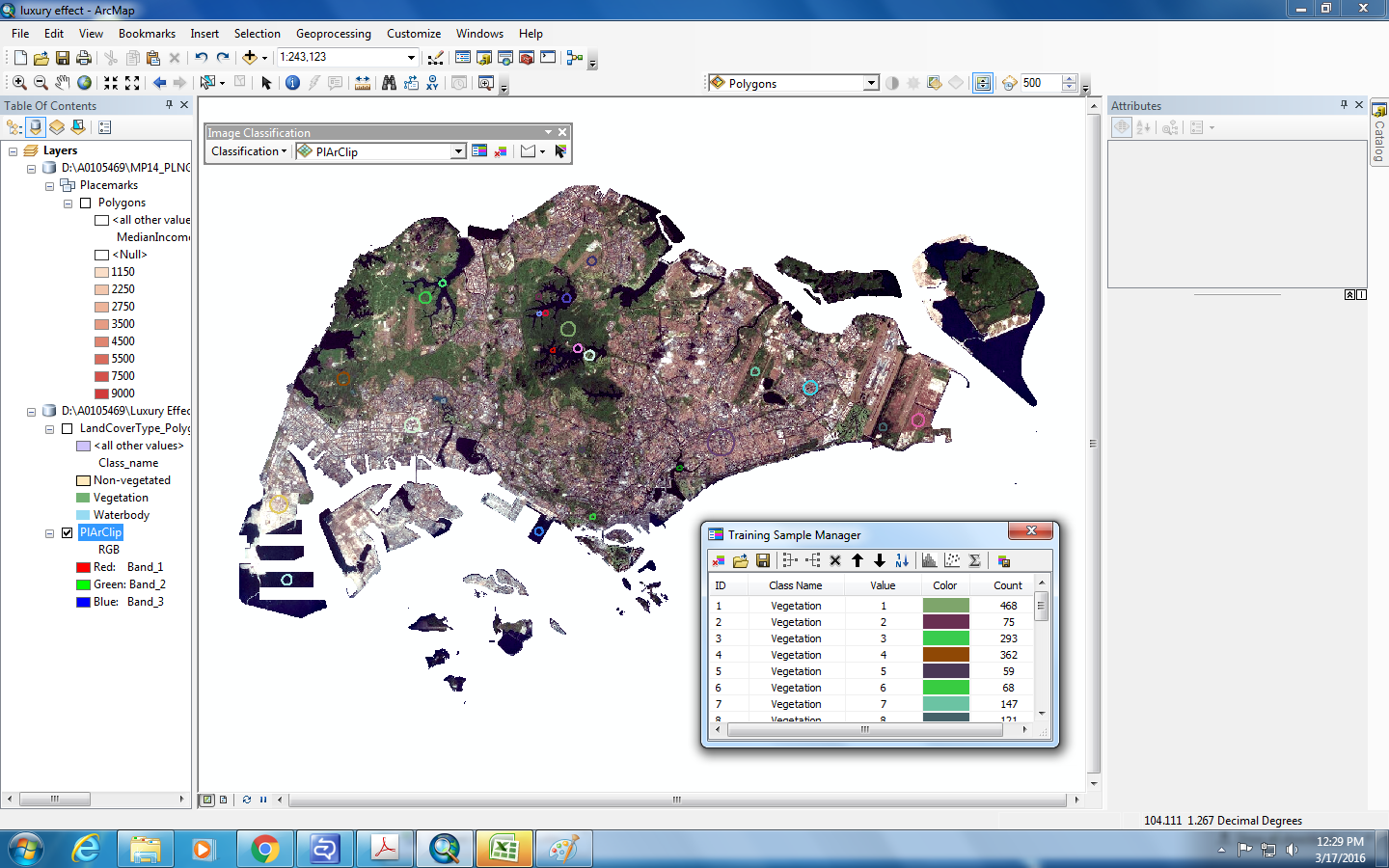
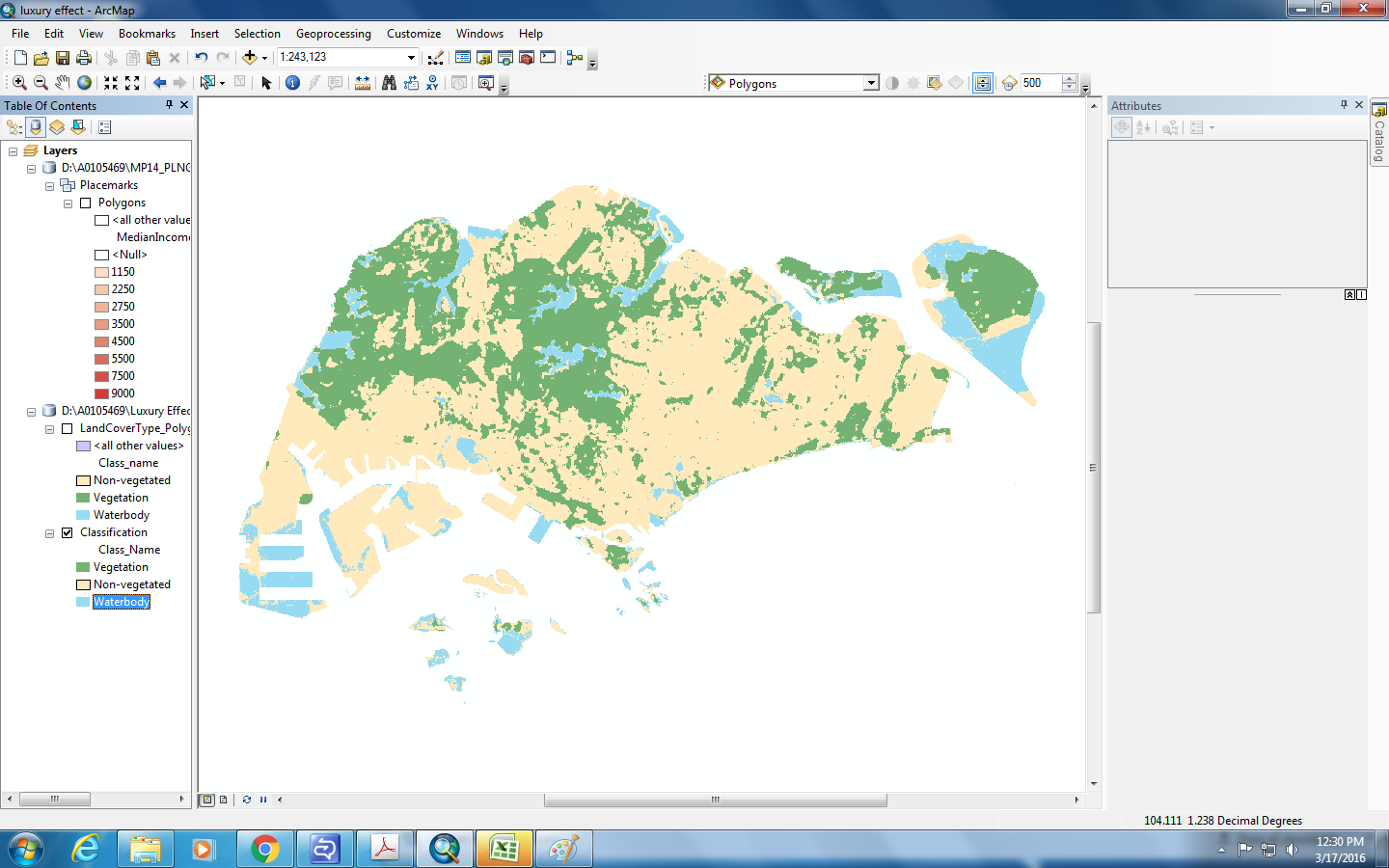
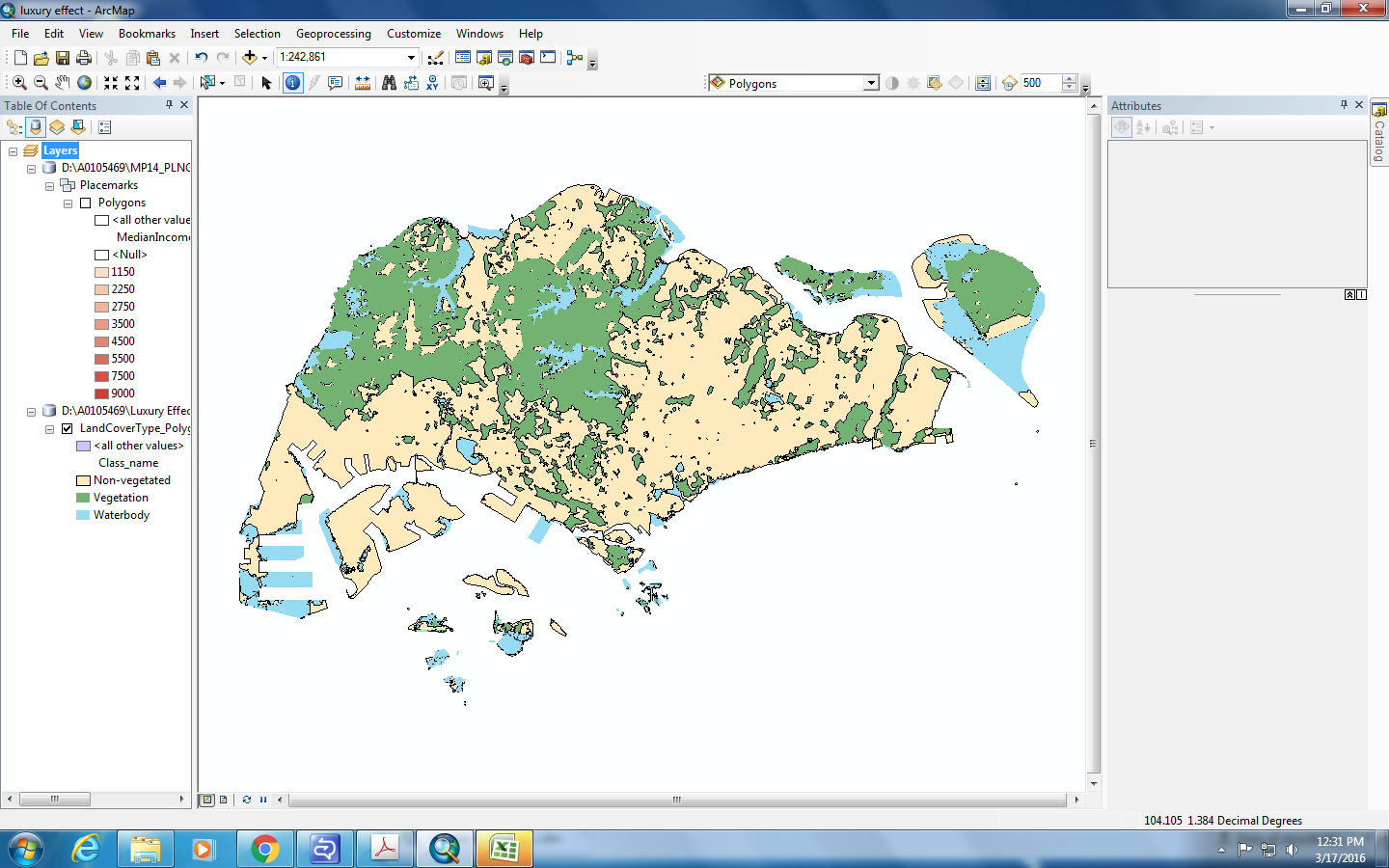

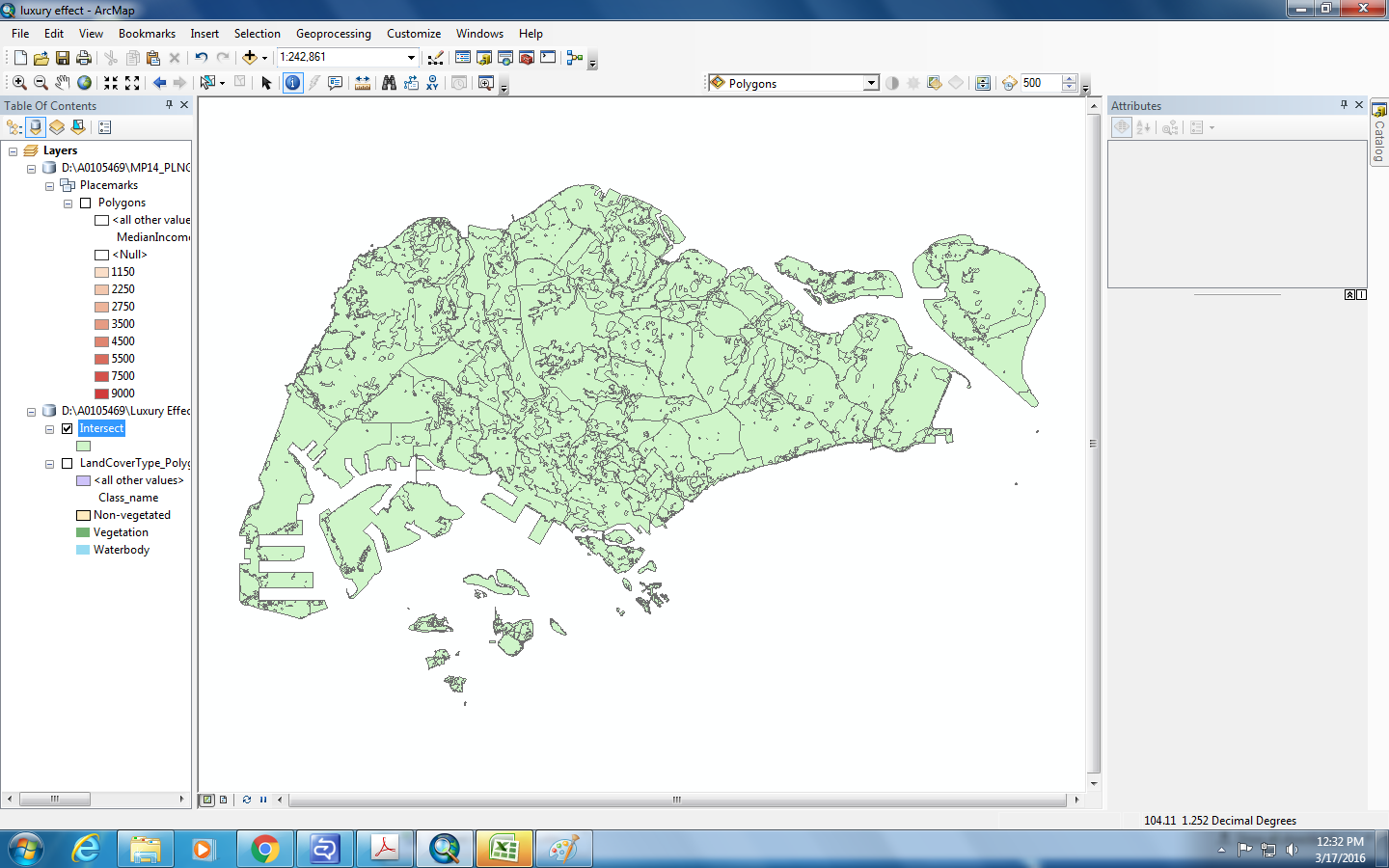
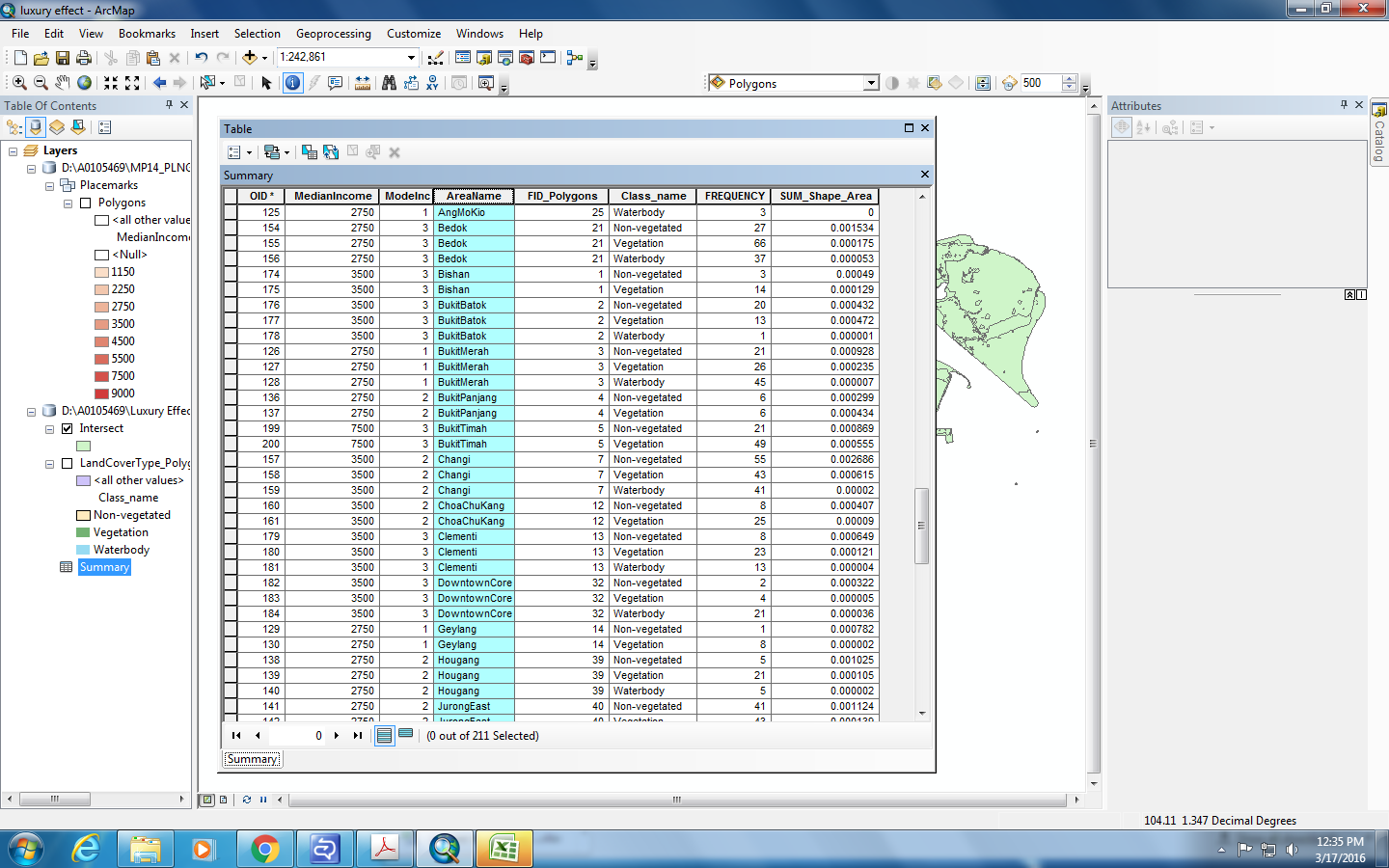
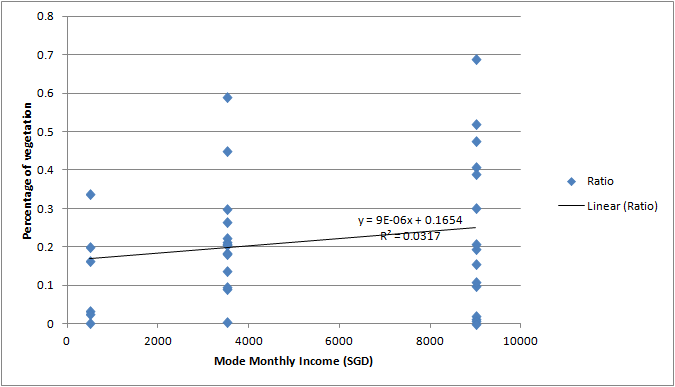
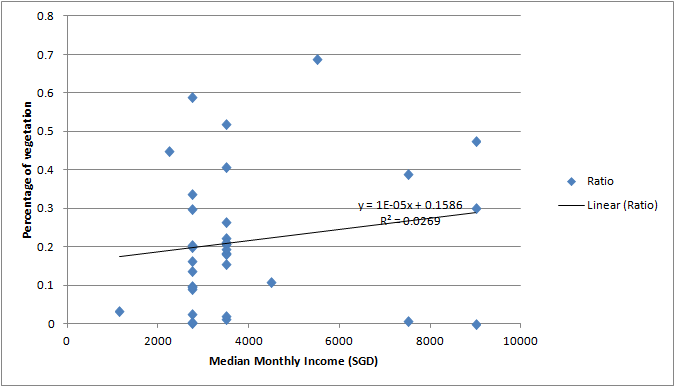

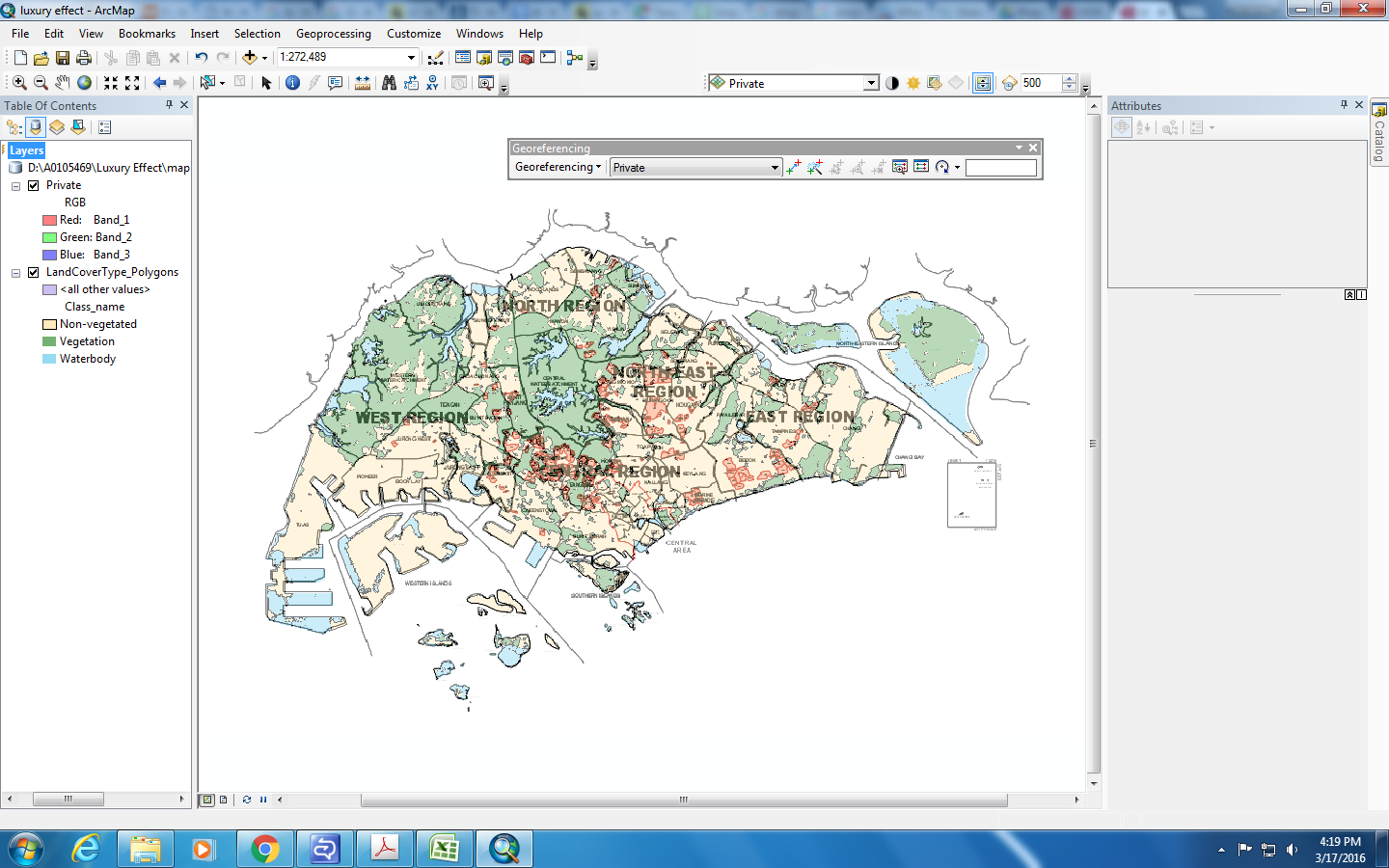
Hey Yi Luan,
This is some amazing analysis! Nice work!
I think it’s pretty clear from your results that there isn’t as strong a luxury effect in Singapore as there is in North America (and some of the other case studies discussed in lecture). As you said, this is likely due to the fact that even with a higher income in Singapore, more money does not equal more tree plantings.
Instead, it might be the opposite: people who are richer tend to want to live near forested areas (so I guess they do pay for trees indirectly).
Then again, do you think that location might better explain the income distribution? For example most of the darker red areas are located in the middle of the island which might indicate that having a house in a central location is more desirable. Also, if richer people would want to live near forested areas, we would see higher income levels around SBWR and Labrador but they only appear to be slightly higher than average.
Once again, really nice post!
Deon
Thank you for your response!
Yes I believe that there is a correlation between location and income, as housing price is very related to the location. If I calculate Moran’s I I guess I will find the income level clustered at the central area. My personal speculation is that both distance to CBD and percentage of vegetation determine the preference for housing location. That could explain:
1. why rich people do not tend to live near places with high vegetation but very far, e.g. Sembawang, and
2. why rich people do not tend to aggregate in areas equally close to CBD but less vegetated compared to Tanglin or Bukit Batok, e.g. Kallang.
If we can correct for the effect of distance to CBD, we might be able to see the effect of vegetation.
As for your two examples,
1. Around SBWR: Lim Chu Kang was not included. Nevertheless, I don’t expect income in Lim Chu Kang to be very high, because it’s really far.
2. Labrador: This is where neighbourhood scale can be very useful. On Google map I did see a lot of Bungalows near HortPark, but it is not reflected here.
I will update a paragraph on how we could study this on neighbourhood scale.
This could have been a group project ! What a fantastic job and thanks Deon for the thoughtful comment. Yi Luan, would you be willing to share these images with me ?
Hi
For my research, can you give me urban map (shape file) of singapore?
thanks